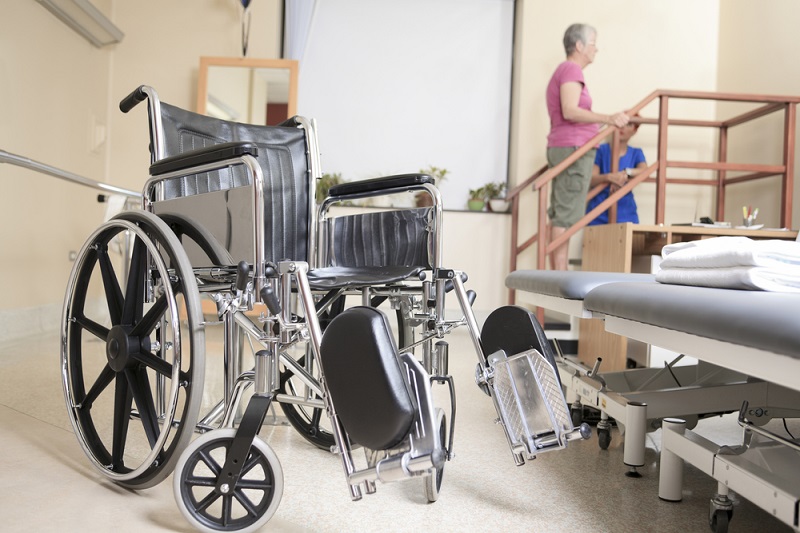Did you know that 20% of the United States population has a clinically diagnosed disability? Of those 65 million+ people, many are confined to wheelchairs.
Being confined to a chair for long periods of time can come with many struggles. Not only is it difficult for some to cope mentally with their physical limitations, but physically, deadly diseases like obesity can creep up given the lack of activity many disabled people are prone to.
Fortunately, being confined to a wheelchair does not mean you’re limited in your ability to care for your body. There are thousands of people who maintain peak physical conditioning despite not having full or any use of their legs.
To give you the inspiration you need to start exercising despite your limited mobility, our team has put together this list of tips on how to exercise when you’re in a wheelchair!
1. Cardio Doesn’t Have to Mean Running or Walking
Cardiovascular exercise is among the top types of activity people all over the world part-take in to manage their weight and keep their health up. Unfortunately, there is a misconception that without the use of your legs, cardiovascular exercises are not possible or won’t be as effective.
We have news for you… Walking and running are just two of a virtually unlimited amount of cardio exercises you can partake in.
When you’re in a wheelchair, manually propelling your chair around a track does excellent work at getting your heart rate up and your calories burned. Alternatively, swimming, water-aerobics or any number of limited mobility exercises are effective cardio workouts you can add to your routine.
2. Seated Strength Training is Effective
Handicapped or not, many of the most effective strength training exercises take place in a seated or laying position. Bench presses, curls, resistance band training…
Those are just a few of the most popular strength increasing activities people with limited mobility can enjoy from the comfort of their wheelchair.
We love strength training for people with mobility limitations because these exercises target the building of muscle groups and bone mass. That can lead to better balance which can then help prevent dangerous falls.
3. Don’t Skimp on Flexibility
With limited mobility comes the painful stiffening of joints which can further reduce your body’s range of motion. Therein lies the value of adding stretches and flexibility training into your workout regimen. This is something many fitness blogs can also help with as well, as there are many different ways to stretch based on your limited movement, age, or lifestyle.
Limited mobility friendly activities like yoga are popular among people who are in wheelchairs. Many yoga positions are attainable without the use of one’s legs. A qualified yoga instructor can help modify any other movements to your comfort and ability levels.
4. Keep Goals Manageable and Don’t Get Frustrated
Any physique outcomes you want to achieve from a fitness perspective are possible from a wheelchair. We do concede though that for many, exercising with limited mobility can present challenges.
For that reason, it’s important to manage your expectations, especially when you start out on your fitness journey.
Take activities easy and get used to what your body can and can’t do. Figure out solutions to make your journey to the gym more accessible via products this company and others provide. Push yourself incrementally every day and look at your fitness journey as a marathon, not a race.
If you do that, you can ensure that you’ll stay more consistent in your workouts and meet your goals!
5. Beware of Pain
Pain is our body’s way of telling us that something is going wrong. While the popular adage “no pain, no gain” has put workout culture in the mindset that it’s a positive thing to push your body, as a person with limited mobility, you want to ensure that you don’t further exacerbate your limitations by incurring a severe injury.
For that reason, if you notice that certain exercises are causing you discomfort, stray away from them. We recommend pairing up with a fitness instructor who has worked with people who have disabilities. They can help you modify workouts to better suit your unique needs.
6. Always Talk to Your Doctor
Pushing your body past the limits people assume you have given your disability can be an exciting and liberating experience. As a matter of fact, helping you discover that feeling is why we wrote this article!
Still, it’s important that before you start exercising, you discuss with your doctor what your goals are and find out what they recommend. Many times your doctor may caution you against certain exercises which may flare up a painful site within your body.
Remember, you should never be afraid to bring up physical activities with your doctor! Most qualified medical professionals will celebrate your wanting to get active. They will work with you to create an exercise regimen that maximizes your results and reduces your risk of injury!
Wrapping Up How to Exercise With Limited Mobility
Exercising with limited mobility is every bit as possible as it is with full mobility. As we would with anybody, we recommend that you focus your activities on a mixture of cardio, strength, and flexibility training.
Work with your doctor and, if possible, a personal trainer to help you develop an exercise routine that will move you towards your goals in the safest way possible.
Just because physical activities may present more of a challenge does not mean that you can’t achieve your fitness outcomes. With drive and perseverance, you can quickly move towards being the healthiest you’ve ever been!

